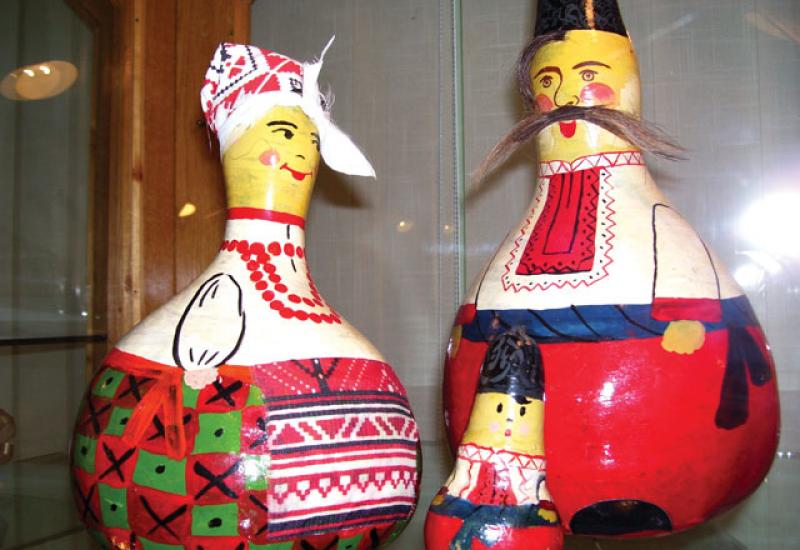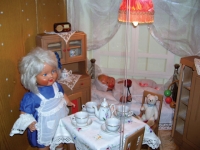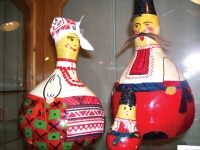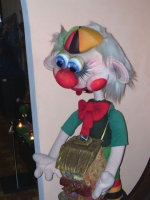All of us came from childhood. Certainly, everyone remembers their favourite toy (usually it is a thing made by your parents or yourself). National toy museum invites you to touch to the childhood (address: Klovskiy uzviz, 8 ). The history of the museum started from 1930s when it was named as Art-technical board of toys, where the best examples were exposed. Currently there are thousands of toys, only several hundred featured in an exhibition, but changes every now and then. All pieces show the evolution of toys. Also here you can see factory-made goods that demonstrate ways of national ideology, hand-made goods that illustrate the folk art. In the exposition are also presented unique and specific toys for educating.
“A doll and a ball – are two main supertoys”, says Ludmila Volodymyrivna Martyniuk, the coordinator of museum, executive secretary of Interagency art-technical board of toys and educative manuals recommended by Ministry of Education and Science of Ukraine. “Population played and keep playing with these toys during the whole life. Toys are dedicated to practical (as they teach, develop and train) and cosmologic spheres of life. A doll and a ball are realistic examples and symbols of humans and planets. A doll is still popular and appreciated toy for children and adults even in the times of technology and modernization.”
On the shelves in the museum compete traditional toy, characters from cartoons, baby-toys, Barbie dolls etc. Folk toys are made from natural materials such as cloth, wood, clay, straw, linen, grass, bark, dough, cheese etc. the best examples of “granny” toys save the historical, household, ceremonial and cosmological memory of the nation. The point is, a doll can be made by hand, so you can associate yourself with a creator. The rapid development of society brought to life famous Barbie (which will celebrate her 50th birthday next year), and in time different companies created her opponents of maybe friends. In the exhibition is shown Barbie from 1960s-1980s.
The soviet period is illustrated with a great number of factory-made dolls (1930s-1980s). Their image became one of the elements of national outlook and identity for several soviet generations. In addition, one of the first soviet “transformers” – a wood horse, which transforms into tractor.
Recently a new exhibition was opened, “Kingdom of dolls”, dedicated to one of the oldest kinds of toys. Visitors can observe the evolution of doll from so called prehistoric times, when it was a cultic object, up to the present times. Of course, manufactured dolls catch the eye, as well as traditional folk, theater, souvenir, interior and vintage examples. The doll itself remains a collective self-portrait of a particular society it was made in.
For instance, there are expensive patrician dolls of XIX century in elegant dresses, representatives of “gold epoch”, which are a personification of prosperity, luxury and elegance. They were in store for girls from upper-class society, and were aimed not only to spark their interest to maternity, but to etiquette and the role of a hospitable mistress.
Among all the items visitors can see one of the latest Ukrainian dolls, made in 1989 on the factory “Peremoga”. Unfortunately, it was not released for implementation due to economic crisis. Today there is no Ukrainian toy factory. Maybe, after this article future engineers, technologists and painters will take interest in making toys and recover Ukrainian toys.





